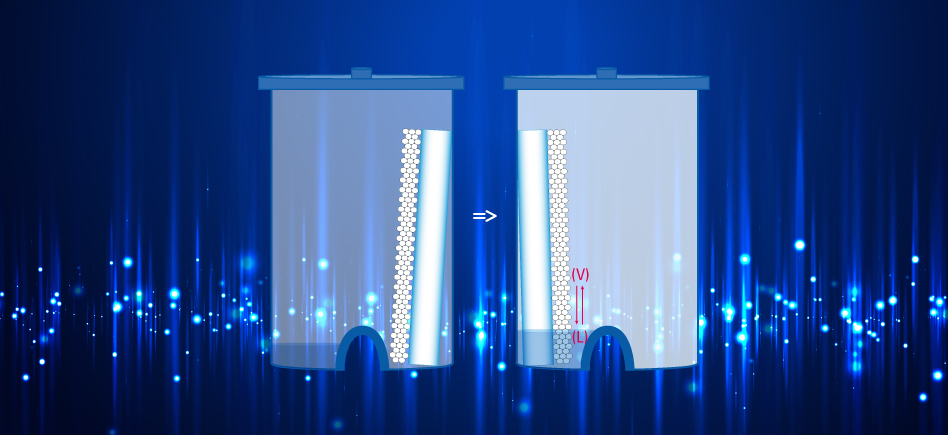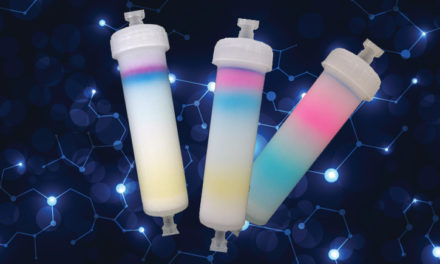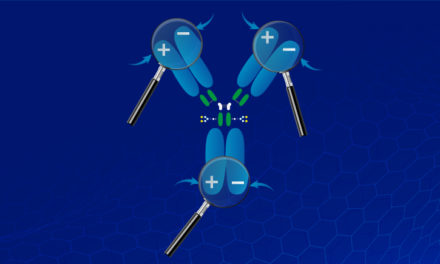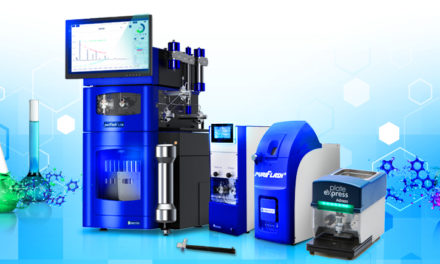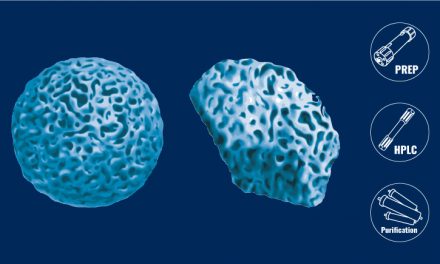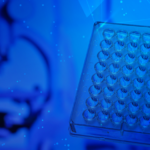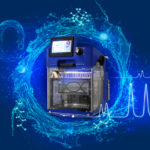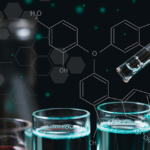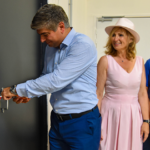Different operational modes are commonly used to make a TLC plate => Unsaturated, Saturated, Pre-Conditioning & Sandwich.
For all of those, double tray chamber are recommended.
| The equilibration of the stationary phase with the mobile phase has a strong influence on the repeatability of a thin-layer chromatography. |
1. Unsaturated mode:Compared to other modes, no equilibration leads to thinner spots (bands) and larger RFs. However there are secondary fronts due to mobile phase de-mixing. One tray is filled with the mobile phase. Just after, TLC plate with “dropped off” compounds is placed as vertically as possible in the same tray. This technique leads to low repeatability vs. others mode. |
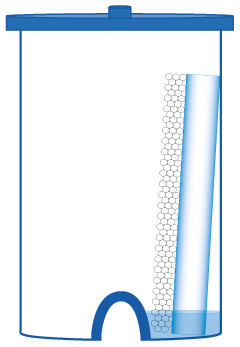 |
2. Saturation mode:Equilibration of the development chamber with saturation by the solvent vapors. The both trays are filled with the development phase. A sheet of paper, vertically placed, dips into the mobile phase of one of the trays. Wait 20/30 minutes so that the mobile phase goes up by capillarity on the paper and is homogenized in vapor concentration. By liquid-vapor equilibrium, the gas phase recondenses on the plate and wets it throughout its height. After moving the lid laterally, the TLC plate is placed as vertically as possible in the second tray. Driven by the mobile phase, from the bottom of the chamber, solutes travel through the stationary phase in equilibrium with the adsorbed mobile phase. This technique gives better reproducibility and with closer HPLC conditions vs. others mode. |
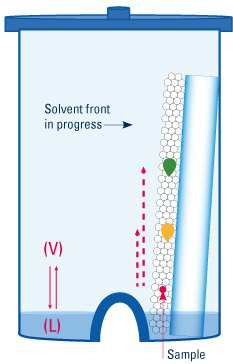 |
3. Pre-conditioning mode:The development phase is introduced into one of the tray of the chamber. Simultaneously, TLC plate is placed as vertically as possible in the second empty tray. 20 to 30 min are necessary to sature the chamber and homogenize vapor and liquid phase in concentration. At vapor equilibrium, the gas phase recondenses over the plate and wet it throughout its length. Then, the plate is switched from the tray to the other one. |
|
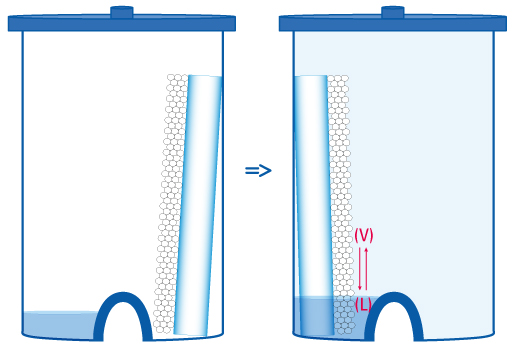 |
|
4. Sandwich mode:A counter-plate is placed a few mm from the TLC. To be more efficient a pad can be put vertically behind each of the two plates. The one behind the back plate must be shorter so that there is no transfer on the top of the separator plate. The more the equilibration between the liquid and vapor phase is reached, the more the adsorbed layer becomes homogeneous over the entire length of the plate. This technique leads to reproducible analysis with closer HPLC conditions. |
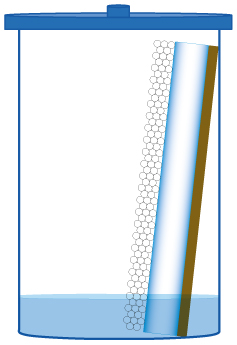 |
Know more:
- Contact us: interfine@interchim.com
- Visit our website: www.interchim.com
- Discover all our purification systems
- Revolutionize your TLC using our App “TLC to Flash & Prep Chromatography”

